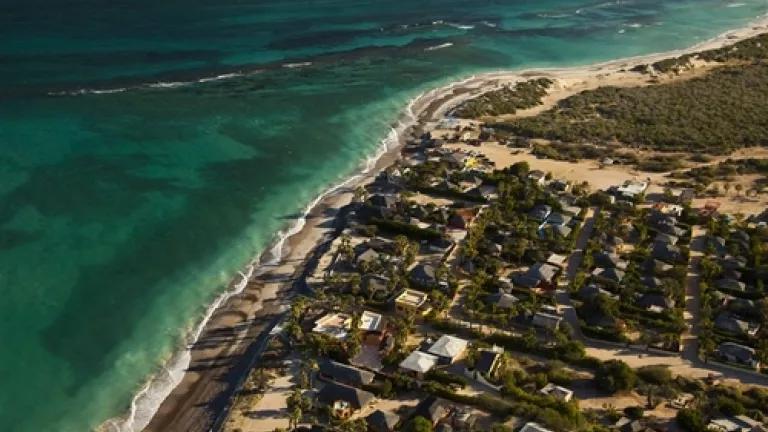Approval of the Cabo Cortés resort complex--next to the healthiest coral reef in the Gulf of California--is a huge step backward for Mexico

Last week, Mexico’s Ministry of Environment and Natural Resources made a grave mistake by approving key components in the proposed Cabo Cortés resort complex, imperiling Cabo Pulmo National Park—home to the healthiest and most important coral reef in northwest Mexico. Local and international groups, scientists and legal experts have all pointed out glaring faults in the project’s environmental impact statement. NRDC and over 38,000 of our e-activists have also joined in by asking the Mexican government to deny authorization of the Cabo Cortés project. Yet despite the broad-based criticism of the proposed resort, the Ministry effectively gave the project a green light.
Cabo Pulmo, in Baja California Sur, is a shining example of conservation for the whole world, a living model of the resilience of marine life. After rampant overfishing and irresponsible fishing practices severely degraded the reef in the 1970s-80s, local communities unified to ask the government to make it a national park. In 1995, Mexico’s government created Cabo Pulmo National Marine Park, and in 2005 it was also named a UNESCO World Heritage Site. The reef is now thriving with the highest concentration of marine life in the entire Gulf of California, including manta rays, humpback whales, dolphins and five of the world’s seven species of endangered sea turtles. And the local communities have successfully developed a low-impact and environmentally sustainable ecotourism-focused economy.
photo: The town of Cabo Pulmo, courtesy of Ralph Lee Hopkins
All of that will be threatened, however, if construction of Cabo Cortés is allowed to proceed. The project’s owner, Spanish real estate company Hansa Urbana, intends to build 13,000 housing units and 3655 hotel rooms (together equaling about 30,000 rooms), 2 million square feet of office and commercial space, three to five golf courses, a private jet port, desalination and water treatment plants, a marina for nearly 500 boats, and all of the infrastructure that comes with what amounts to a new city. All of this—9500 acres in total—would sit just north of Cabo Pulmo, adjacent to the National Park.
To say that Cabo Cortés would not affect the fragile coral reef and the species that depend on it is, bluntly put, unbelievable.
Cabo Cortés’s environmental impact statement was woefully insufficient to warrant approval, and reasoned that the resort would not affect the park because the local water currents only flow from south to north. This conclusion is based on merely two days of research conducted more than twenty years ago, and some additional aerial photographs. The company used no recent data on the currents, the coastline or the impacts that runoff from the golf courses—including chemical fertilizers—would have on marine life. And they ignored years of scientific articles proving that the currents in the area flow in multiple directions, varying with the seasons.
One would expect the government agency charged with protecting a valuable and vulnerable area like Cabo Pulmo to be stringent in their review of Cabo Cortés, rigorously applying environmental laws and standards. Unfortunately, Mexico’s Ministry of Environment and Natural Resources did the opposite by loosely adhering their own criteria, which they said “are not obligatory” but rather open to interpretation.
The resolution passed last week authorized several main components of Hansa Urbana’s proposal, including:
- Housing, hotel and commercial development
- A marina for 490 boats
- Two 18-hole golf courses
- A 10.5 mile-long aqueduct
- 324 acres of roads and highways
Two key items missing from that list are the desalination and water treatment plants. However, the clear necessity of having both at a luxury resort complex for hygienic reasons means that it is very likely they will be approved in the future.
Climate change, resource exploitation and pollution, among other things, degrade and damage this planet constantly. But Cabo Pulmo is a conservation success story that Mexico’s government should be proud of and try to replicate in other places. The Ministry of Environment should do everything it can to protect this remarkable place and to respect the people living there, who have already fought so hard to get the coral reef to its healthy state. By approving the short-sighted Cabo Cortés resort complex—even just parts of it—the Mexican government has taken a huge step backwards, with potentially irreparable consequences on one of the most important coral reefs in the region.
Please join NRDC and our friends in Baja California Sur as we continue asking the government not to allow Cabo Cortés to proceed with its destructive and poorly-planned proposal.

